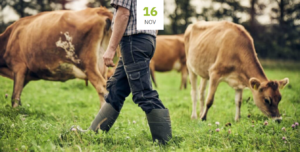
INGLISKEELNE seminar: Grassfed milk – can it be profitable?
16. nov. 2021 15:00 - 16:00
Grassfed milk – can it be profitable?

Grassfed milk – can it be profitable? Allikas: matlust.eu
Day: Tuesday, November 16th
Time: 3:00-4:00 PM
Where: Via Zoom
REGISTER HERE
Ürituse koduleht: https://matlust.eu/aktiviteter/grasmjolk/
Welcome to an English speaking seminar from MatLust where you will meet
- Torsten Wetche, farmer and unit holder of Thise dairy,
- Peder Gerhardt Jessen, sales and marketing director at Thise dairy
- Claes Jürss who runs Jürss dairy together with Kerstin Jürss inHälleforsnäs in Sweden
Some History
In 2017 Danish dairy company Thise, together with Coop Denmark, launched a new product – milk from cows raised exclusively on grass and ley. The milk was brought from the farm Hvanstrup on Jylland and sold in Coop Irma shops for 1,9 euro/litre. The launch got financial support from Coop Denmark’s crowdfunding platform where more than 400 individual consumers invested in product development.
Thanks to an increase in demand two more farms have since then converted to grassfed milk production. This year Thise has also increased their range of products to include butter, crème fraiche and yoghurt from grassfed milk.
What is special about grassfed milk?
- What is special about grassfed milk is that the cows are fed grass and ley only – no corn, soy or grain. This way milk production is not using feed that could have been suitable for direct human consumption.
- By combining a smaller grassfed milk production with growing organic root crops, oats and quinoa, Torsten Wetche is able to produce food to cover the yearly needs of 3500 people, while simultaneously maintaining pastures to the benefit of wildlife dependant on this particular practice.
- If he would specialise in organic milk production he would have had a larger herd of cows, but only produced the equivalent amount of food to cover the needs of 1200 people.
- In Denmark grassfed milk also comes with higher standards for animal welfare compared with regular organic milk, for example cows and calves are given 40% more space.
- Milk from grassfed production has a higher content of Omega-3 fatty acids compared with regular milk.
Grassfed milk hence comes with many advantages – for biodiversity, resource efficient food production, animal welfare, to mention a few – but does it add up economically? How does the cooperation between producer, dairy and retail work? Is grassfed milk expected to continue to grow in Denmark and could we have larger scale grassfed milk also in Sweden?
WHEN AND WHERE?
Day: Tuesday, November 16th
Time: 3:00-4:00 PM
Where: Via Zoom
